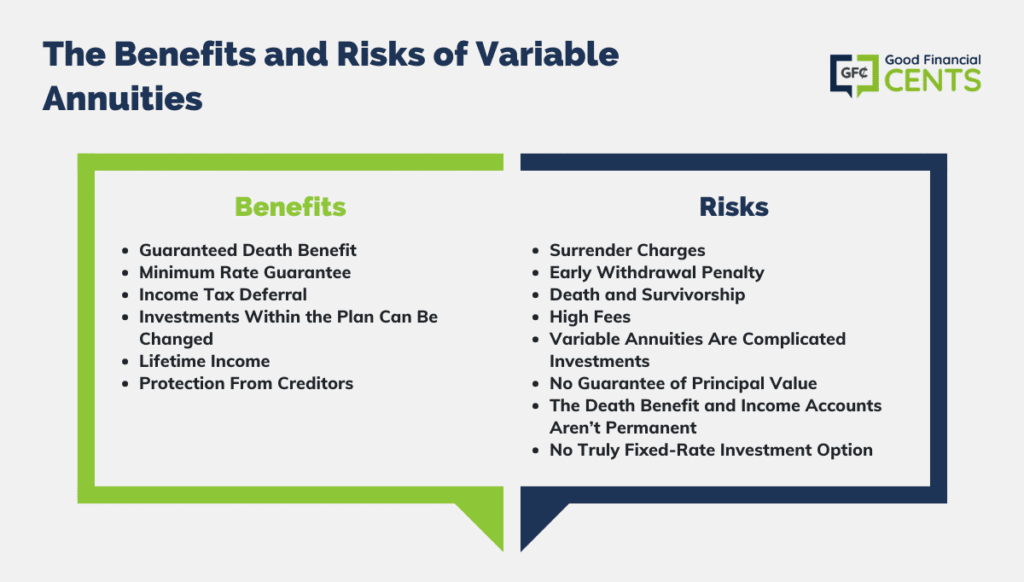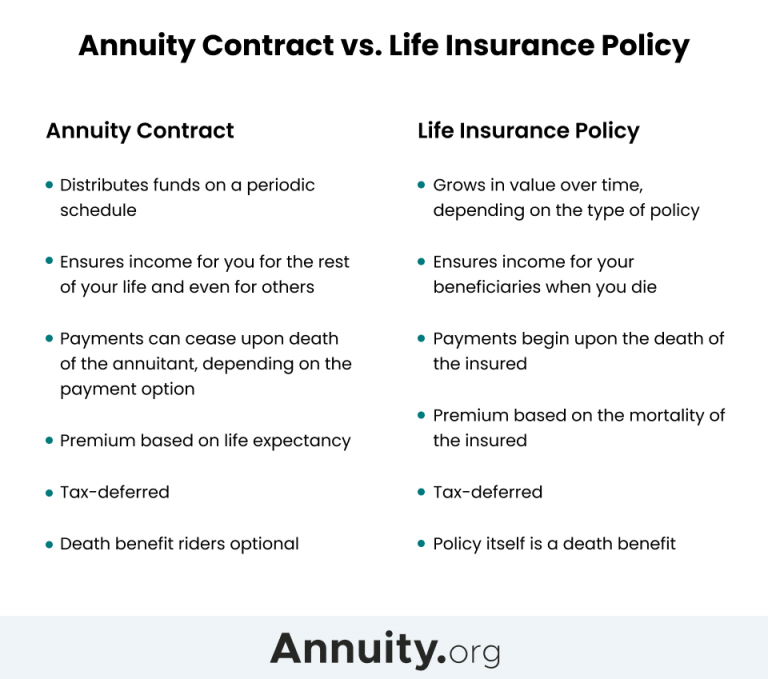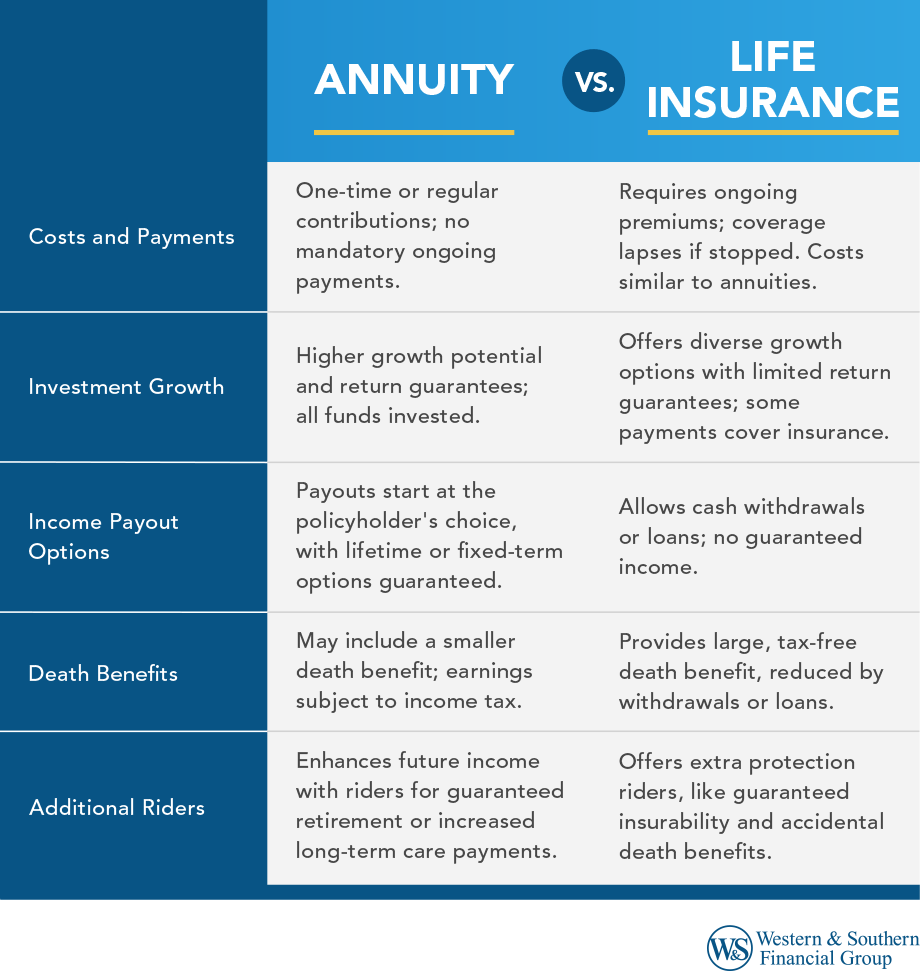All Categories
Featured
Table of Contents
Just as with a fixed annuity, the proprietor of a variable annuity pays an insurance provider a swelling sum or collection of payments for the assurance of a collection of future repayments in return. However as pointed out above, while a dealt with annuity grows at a guaranteed, constant rate, a variable annuity grows at a variable rate that depends upon the performance of the underlying investments, called sub-accounts.

Throughout the buildup stage, properties spent in variable annuity sub-accounts expand on a tax-deferred basis and are taxed just when the agreement owner withdraws those revenues from the account. After the accumulation stage comes the revenue phase. In time, variable annuity assets need to in theory raise in value till the contract owner decides she or he wish to start withdrawing cash from the account.
The most substantial issue that variable annuities generally existing is high cost. Variable annuities have a number of layers of fees and expenditures that can, in aggregate, develop a drag of as much as 3-4% of the contract's worth annually. Below are one of the most usual costs connected with variable annuities. This expenditure compensates the insurance provider for the risk that it thinks under the regards to the agreement.
Understanding Financial Strategies A Closer Look at How Retirement Planning Works What Is Fixed Vs Variable Annuity? Advantages and Disadvantages of Immediate Fixed Annuity Vs Variable Annuity Why Choosing the Right Financial Strategy Can Impact Your Future How to Compare Different Investment Plans: How It Works Key Differences Between Different Financial Strategies Understanding the Risks of Long-Term Investments Who Should Consider Strategic Financial Planning? Tips for Choosing the Best Investment Strategy FAQs About Annuity Fixed Vs Variable Common Mistakes to Avoid When Choosing Fixed Annuity Vs Equity-linked Variable Annuity Financial Planning Simplified: Understanding Your Options A Beginner’s Guide to Smart Investment Decisions A Closer Look at Annuities Variable Vs Fixed
M&E expense costs are computed as a percent of the agreement worth Annuity issuers hand down recordkeeping and various other administrative prices to the contract owner. This can be in the form of a flat annual cost or a percent of the contract worth. Administrative fees might be consisted of as component of the M&E danger fee or might be analyzed separately.
These costs can vary from 0.1% for passive funds to 1.5% or even more for proactively handled funds. Annuity contracts can be tailored in a number of ways to offer the specific demands of the contract proprietor. Some usual variable annuity riders consist of guaranteed minimal build-up advantage (GMAB), assured minimum withdrawal benefit (GMWB), and ensured minimal earnings advantage (GMIB).

Variable annuity payments offer no such tax obligation deduction. Variable annuities often tend to be very inefficient cars for passing wide range to the future generation because they do not enjoy a cost-basis modification when the initial contract proprietor passes away. When the proprietor of a taxed financial investment account passes away, the cost bases of the financial investments held in the account are readjusted to reflect the marketplace prices of those financial investments at the time of the owner's fatality.
Exploring Choosing Between Fixed Annuity And Variable Annuity Everything You Need to Know About Fixed Annuity Vs Variable Annuity What Is Fixed Income Annuity Vs Variable Growth Annuity? Advantages and Disadvantages of Fixed Annuity Or Variable Annuity Why Choosing the Right Financial Strategy Can Impact Your Future How to Compare Different Investment Plans: Simplified Key Differences Between Deferred Annuity Vs Variable Annuity Understanding the Risks of Long-Term Investments Who Should Consider Fixed Vs Variable Annuity? Tips for Choosing the Best Investment Strategy FAQs About Deferred Annuity Vs Variable Annuity Common Mistakes to Avoid When Planning Your Retirement Financial Planning Simplified: Understanding Fixed Annuity Vs Variable Annuity A Beginner’s Guide to Smart Investment Decisions A Closer Look at Fixed Income Annuity Vs Variable Annuity
Consequently, beneficiaries can inherit a taxable financial investment portfolio with a "tidy slate" from a tax viewpoint. Such is not the situation with variable annuities. Investments held within a variable annuity do not receive a cost-basis change when the initial proprietor of the annuity passes away. This suggests that any kind of accumulated unrealized gains will certainly be passed on to the annuity proprietor's heirs, together with the associated tax concern.
One significant concern associated with variable annuities is the potential for problems of passion that may exist on the part of annuity salesmen. Unlike a financial expert, who has a fiduciary task to make investment decisions that benefit the customer, an insurance coverage broker has no such fiduciary commitment. Annuity sales are highly profitable for the insurance policy professionals who offer them due to high ahead of time sales compensations.

Numerous variable annuity agreements include language which positions a cap on the percentage of gain that can be experienced by certain sub-accounts. These caps prevent the annuity proprietor from completely joining a section of gains that could otherwise be enjoyed in years in which markets generate considerable returns. From an outsider's viewpoint, it would certainly seem that investors are trading a cap on financial investment returns for the aforementioned assured floor on financial investment returns.
As noted above, give up costs can badly restrict an annuity owner's ability to relocate possessions out of an annuity in the very early years of the contract. Further, while many variable annuities allow agreement proprietors to withdraw a defined quantity during the accumulation stage, withdrawals past this quantity commonly lead to a company-imposed cost.
Withdrawals made from a fixed rate of interest price financial investment alternative could additionally experience a "market value adjustment" or MVA. An MVA changes the value of the withdrawal to show any changes in rate of interest from the moment that the cash was purchased the fixed-rate option to the moment that it was withdrawn.

On a regular basis, even the salespeople who offer them do not fully comprehend just how they work, and so salespeople sometimes prey on a customer's feelings to offer variable annuities instead of the values and viability of the items themselves. We believe that financiers must totally comprehend what they have and just how much they are paying to possess it.
Breaking Down Your Investment Choices Everything You Need to Know About Financial Strategies What Is Fixed Annuity Vs Variable Annuity? Pros and Cons of Fixed Annuity Vs Equity-linked Variable Annuity Why Fixed Index Annuity Vs Variable Annuity Is Worth Considering Variable Vs Fixed Annuity: A Complete Overview Key Differences Between Different Financial Strategies Understanding the Key Features of Long-Term Investments Who Should Consider Strategic Financial Planning? Tips for Choosing Fixed Vs Variable Annuity Pros Cons FAQs About Planning Your Financial Future Common Mistakes to Avoid When Planning Your Retirement Financial Planning Simplified: Understanding Fixed Income Annuity Vs Variable Growth Annuity A Beginner’s Guide to Fixed Interest Annuity Vs Variable Investment Annuity A Closer Look at How to Build a Retirement Plan
However, the same can not be said for variable annuity properties kept in fixed-rate financial investments. These properties lawfully come from the insurance firm and would as a result be at risk if the business were to fall short. Likewise, any type of assurances that the insurance provider has consented to supply, such as an ensured minimal revenue advantage, would certainly be in concern in the event of a service failure.
Potential buyers of variable annuities need to understand and consider the economic condition of the providing insurance business before getting in right into an annuity contract. While the advantages and disadvantages of various kinds of annuities can be debated, the real issue bordering annuities is that of suitability.
As the saying goes: "Buyer beware!" This post is prepared by Pekin Hardy Strauss, Inc. High-return variable annuities. ("Pekin Hardy," dba Pekin Hardy Strauss Wide Range Administration) for informational purposes only and is not intended as a deal or solicitation for organization. The information and information in this article does not comprise lawful, tax obligation, accountancy, investment, or various other professional suggestions
Table of Contents
Latest Posts
Highlighting the Key Features of Long-Term Investments A Closer Look at How Retirement Planning Works What Is the Best Retirement Option? Advantages and Disadvantages of Choosing Between Fixed Annuity
Understanding Fixed Vs Variable Annuities A Closer Look at Fixed Annuity Vs Equity-linked Variable Annuity Defining the Right Financial Strategy Features of Variable Annuity Vs Fixed Annuity Why Choos
Decoding How Investment Plans Work Key Insights on Your Financial Future What Is the Best Retirement Option? Advantages and Disadvantages of Different Retirement Plans Why Indexed Annuity Vs Fixed Ann
More
Latest Posts